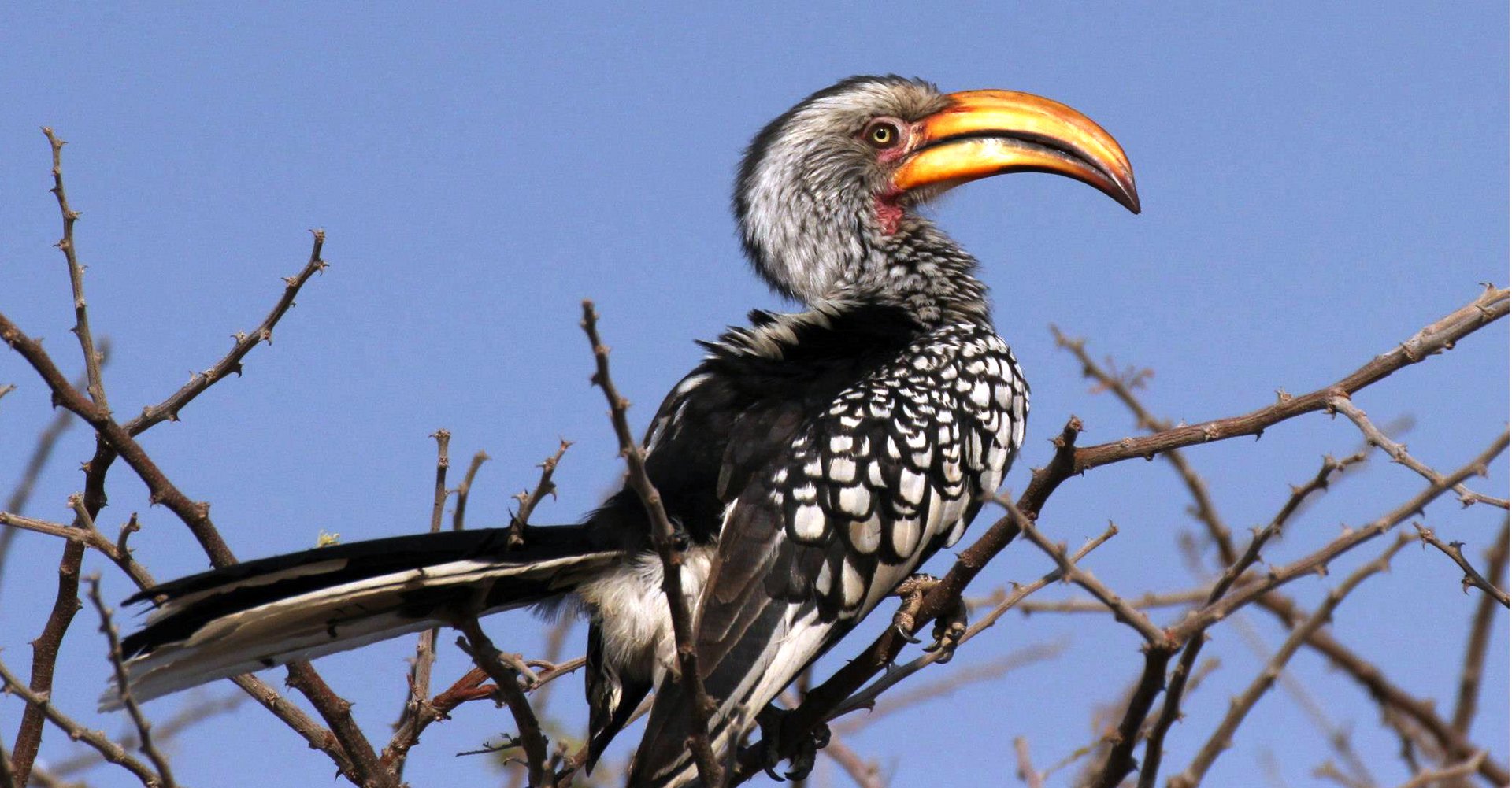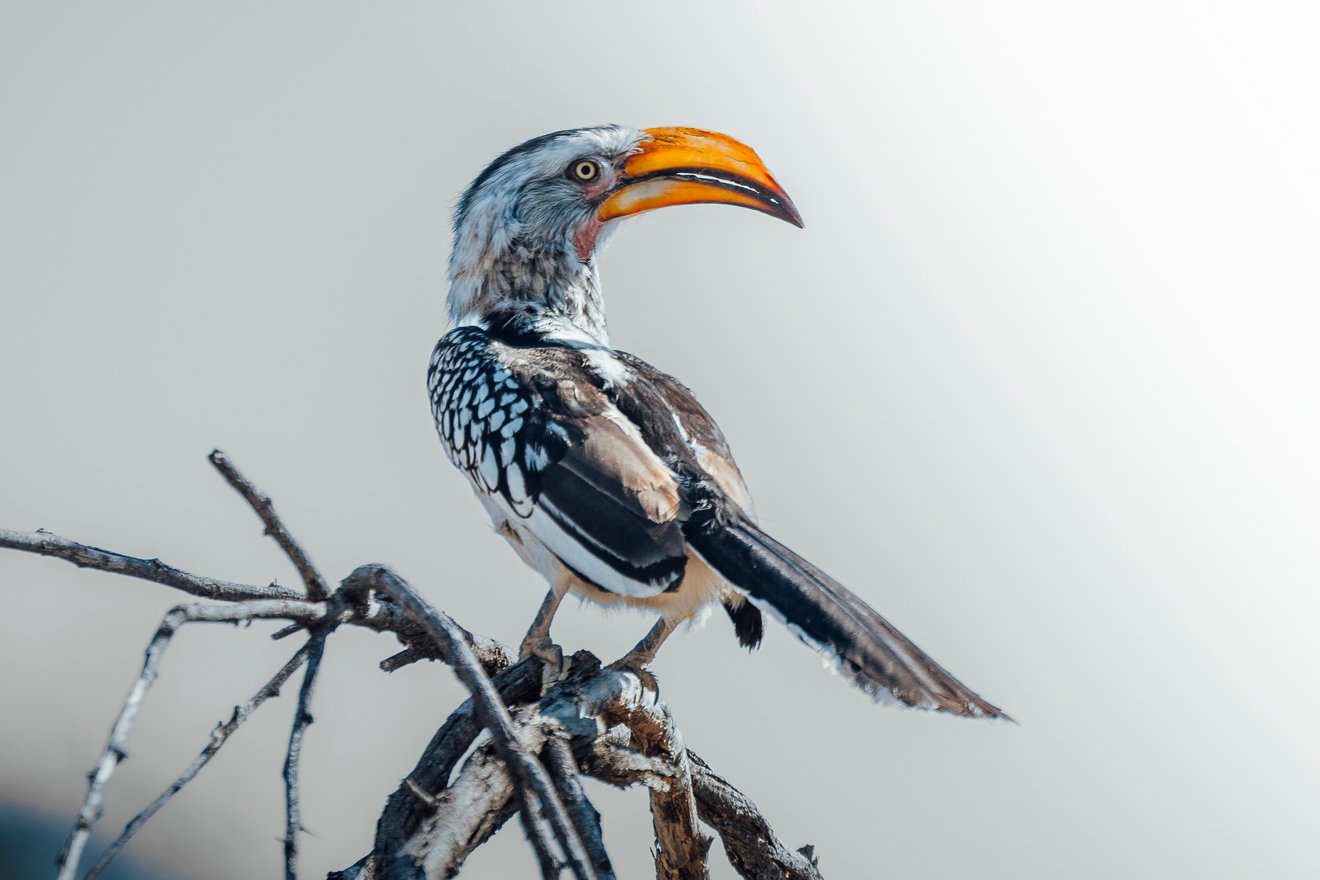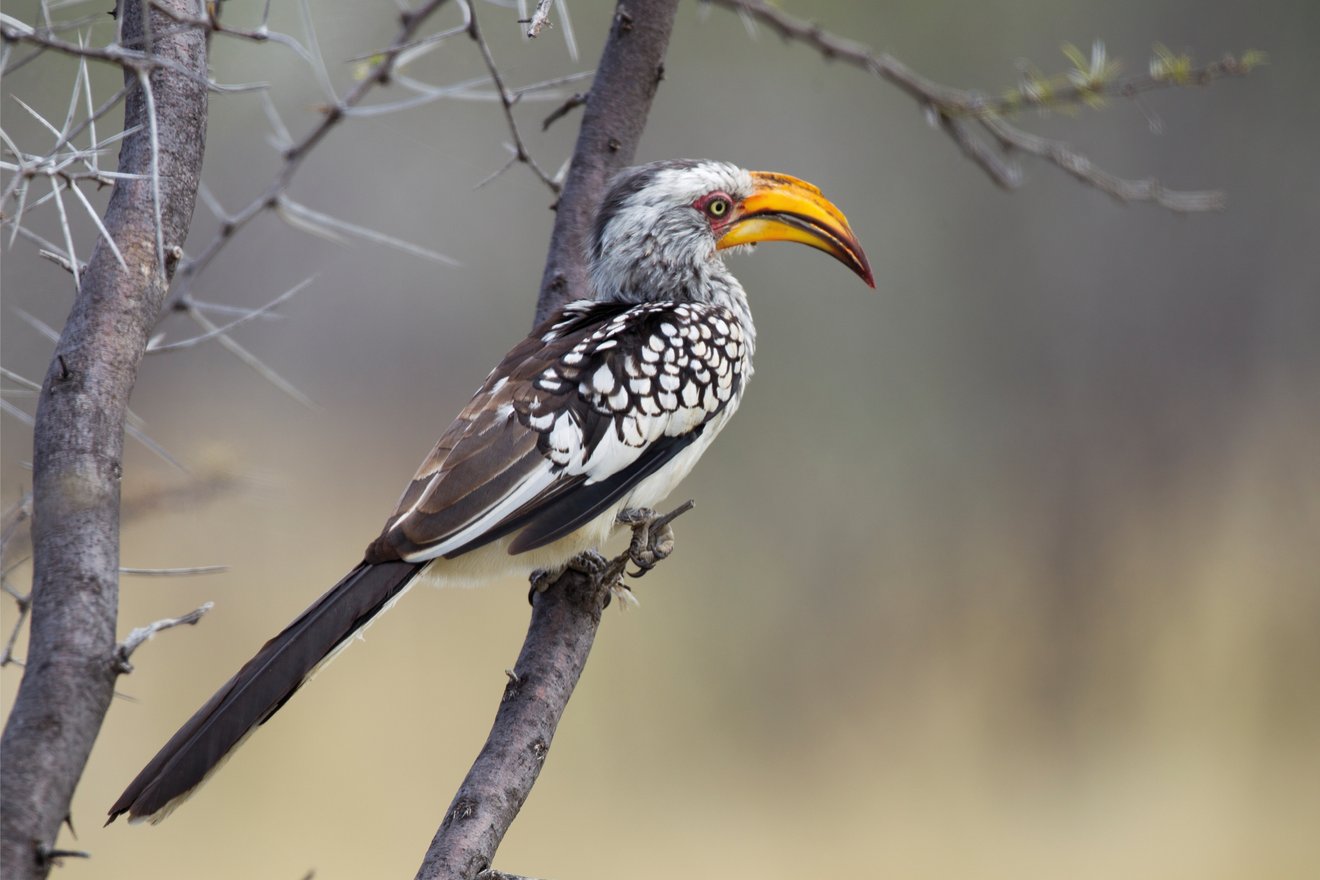The Southern Yellow-Billed Hornbill, affectionately known in Namibia as the "Flying Banana" or "Banana Bird," was once considered a subspecies of the Yellow-Billed Hornbills. However, recent studies have shown it to be more closely related to the Red-Billed Hornbill, leading to a change in its official name. Despite this, the bird’s popular name remains entrenched in the local vernacular.
Although this small species of hornbill, found exclusively in Africa, was removed from the Red List of endangered species in 2016, global warming has led to the rapid extinction of medium-sized hornbills in other parts of their range.
Flying Banana
Banana Bird
The Southern Yellow-Billed Hornbill is a medium-sized bird of southern Africa, primarily inhabiting open bushlands and dry savannas, but it can also be found in agricultural areas. It is often seen alone or in pairs, either perched on trees, surveying the landscape with its loud calls, or skillfully hopping on the ground in search of insects, small reptiles, and fruits, which make up the majority of its diet.
This hornbill species is monogamous. Once a male Southern Yellow-Billed Hornbill has found a mate, it stays with her, establishing and defending a territory. Nests are typically built in natural cavities found in trees, cliffs, or earth banks at heights ranging from 1 to 12 meters above the ground.
Remarkable Nesting Behaviour
One of the most fascinating aspects of this bird's behaviour is its nesting strategy, which effectively protects the chicks from predators. During nesting, the female seals herself inside the nest with the help of her mate by blocking the entrance with a mixture of mud, droppings, and food remnants. This process leaves only a narrow vertical slit, ensuring good air circulation and providing insulation, while also serving as a feeding slot through which the male supplies food to the female and later to the chicks. The slit also allows the female to expel waste, keeping the nest clean. Many nests feature a long escape tunnel as a precaution against predators breaking in to attack the eggs or chicks.
Once sealed inside, the female lays between 2 to 6 eggs, which hatch after about 24 days. During this period, the female sheds her flight and tail feathers, which regrow while she stays with the chicks. When the chicks are about half-grown, the female breaks out of the nest to assist the male in feeding them. The chicks then rebuild the wall from inside, continuing to be fed through the slit by their parents. When they are fully grown, the chicks break out of the nest and begin to fly.




